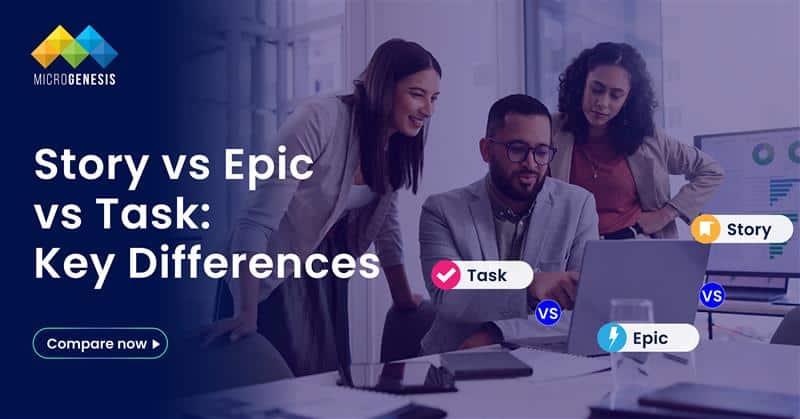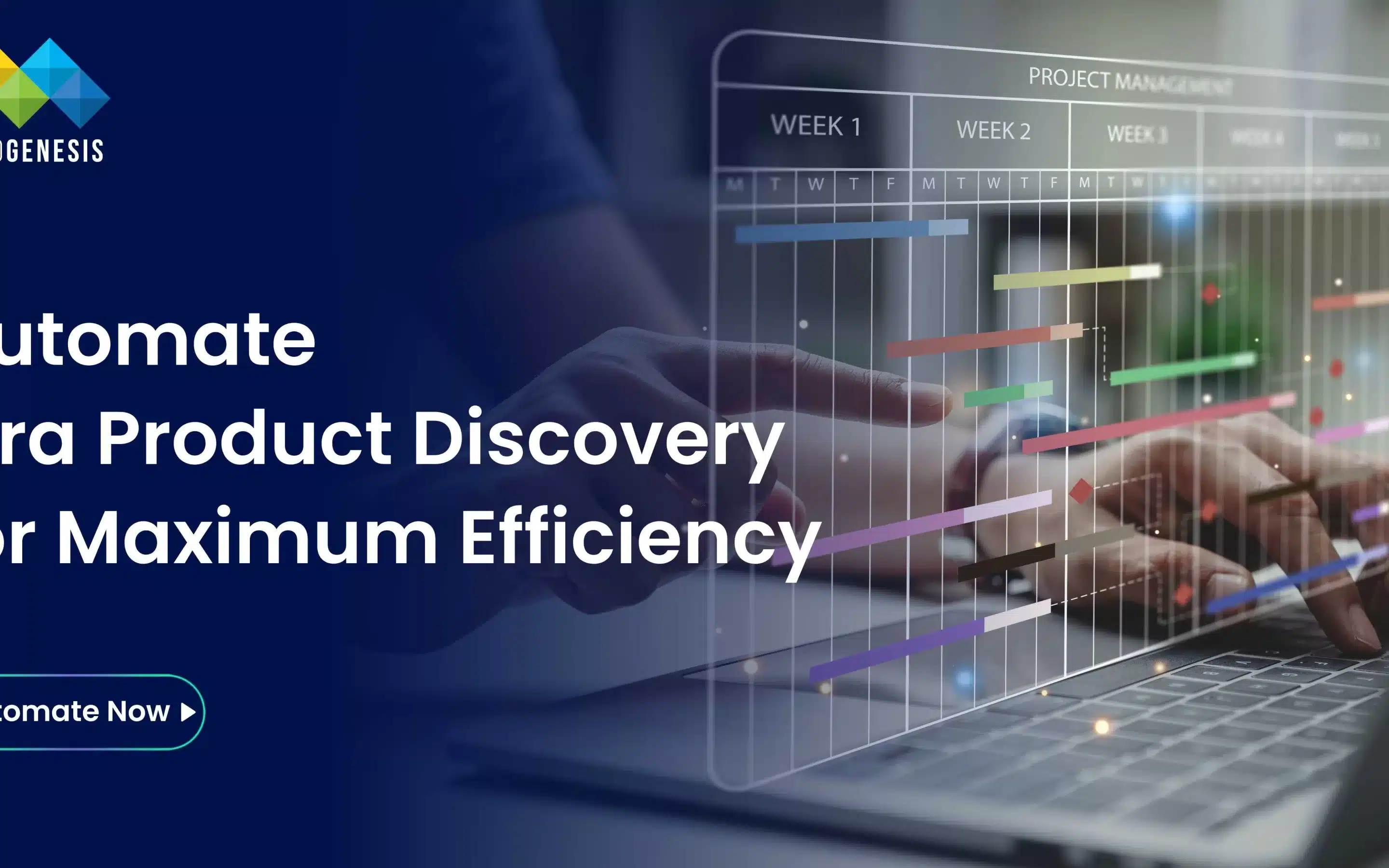1. Jira is built on an issue‑type hierarchy designed to help teams manage work more effectively. But confusion often arises when teams misuse Epics, Stories, or Tasks, which can lead to bloated backlogs, poor traceability, and execution bottlenecks.
This guide explores each issue type—Epic, Story, Task—clarifying their purpose, differences, and best practices, so you can align Jira structure with Agile principles and achieve better delivery outcomes.
2. Jira Issue Hierarchy Overview
In standard Jira configurations, the issue hierarchy is structured as follows:
Epic → large cross‑cutting initiative or theme spanning multiple sprints or teams
Story → a user‑centric feature or requirement, typically completed within a sprint
Task → a technical or administrative piece of work that may or may not align with a Story
Sub‑task → a smaller unit of work, child to a Story or Task, for detailed tracking
Understanding this hierarchy is essential for governance, reporting, and scaling Agile practices across multiple teams.
3. What Is an Epic?
Definition:
An Epic represents a significant business objective or theme, often made up of multiple Stories and spanning several sprints or teams.
Key Characteristics:
Large scope – Encompasses many smaller work items
Time-spanning – May take weeks or months to complete
Cross-functional – Involves multiple teams or disciplines
Strategic alignment – Maps to product roadmap, OKRs, or business goals
Examples:
“Implement Mobile App Version 2.0”
“Launch New E-commerce Checkout Flow”
“Upgrade Infrastructure for GDPR Compliance”
Best Use Cases:
Breaking down long-term strategic initiatives
Planning across multiple teams or releases
Organising backlog around outcomes or goals
4. What Is a Story?
Definition:
A Story (or User Story) defines a user-facing feature or requirement intended to deliver value within a single sprint.
Key Characteristics:
INVEST-friendly – Independent, Negotiable, Valuable, Estimable, Small, Testable
User-focused – Written as: “As a ___, I want ___ so that ___.”
Sprint-sized – Scoped to be achievable within 1–2 weeks
Examples:
“As a shopper, I want to filter search results by price.”
“As an admin, I want audit logs for all user account changes.”
Best Use Cases:
Capturing small features or product enhancements
Driving customer or stakeholder value
Creating testable and deliverable increments
5. What Is a Task?
Definition:
A Task is a non-user-facing, often technical activity or administrative request needed to complete work.
Key Characteristics:
Technical or operations-focused – Back-end work, configuration, data import
Optional linkage – Does not always belong to a Story
Execution-level – Can span from a few hours to a few days
Examples:
“Set up database schema for user service.”
“Configure SSL certificates on staging server.”
“Bulk import customer data via script.”
Best Use Cases:
Tracking non-functional or maintenance work
Capturing administrative or system-level activities
Supporting Stories when they require extra engineering effort
6. Relationships and Use Cases
a. Epic → Story → Task Flow
Epics contain multiple Stories.
Stories define user value and may break down into Tasks or Sub‑tasks for technical realization.
Example Flow:
Epic: “Launch New Feature X”
Story: “As a user, I want to do X.”
Task: “Create API endpoint for X.”
Sub-task: “Write database migration,” “Design UI mockups”
b. When to Use Tasks vs Sub‑tasks
Sub‑tasks: micro-work tied directly to a parent Story or Task for fine-grained progress. Not visible in backlog by default.
Tasks: standalone work units, sometimes levels above Sub‑tasks. Use when work does not directly belong to a Story or when tracking independently across sprints.
c. Epics Across Teams and Projects
Epics can span multiple Jira projects or cross-team initiatives.
Use tools like Advanced Roadmaps, Portfolio, or filters to visualize Epic progress across the organization.
Allocate Stories in respective team boards while tracking parent Epic centrally.
Read More: Jira Service Management vs. Zendesk: A Comprehensive Comparison
7. Best Practices in Using Epics, Stories, and Tasks
1. Use Epics for Outcomes
Epics should describe what you want to achieve, not how you’ll do it. Focus on user value or business goals. Instead of naming an Epic “Refactor Backend,” a better example would be “Enable Faster Checkout Experience.” This outcome-driven approach helps align teams with strategic initiatives and allows stakeholders to better understand the value of ongoing work.
✅ Tip: An Epic should represent a deliverable that takes multiple sprints to complete and has a measurable impact.
2. Craft INVEST Stories
Each Story should adhere to the INVEST model:
- Independent – Can be delivered separately from others
- Negotiable – Collaborative and not overly detailed
- Valuable – Provides clear value to users or customers
- Estimable – Can be roughly estimated
- Small – Can be completed in a sprint
- Testable – Has clear acceptance criteria
This method ensures that your Stories are actionable and effective. A well-written Story like, “As a user, I want to save my payment method so I can check out faster next time” provides value, clarity, and direction for developers and testers.
3. Don’t Overuse Sub‑tasks
Sub-tasks are best used to break down a Story into specific, dependent work that must be done by different team members (e.g., development, design, QA). Overusing them can create clutter and micromanagement issues. Use Sub-tasks only when clarity or division of labor requires it.
🚫 Avoid creating Sub-tasks like “Work on it,” “Review it,” “Test it” unless they represent distinct phases with a clear owner or purpose.
4. Minimize Task Overloading
Tasks should be execution-focused and represent a meaningful chunk of work—not too vague and not too large. Assigning Tasks that cover multiple days or skills makes progress hard to track. Overloaded Tasks can slow velocity tracking, lead to missed deadlines, and dilute accountability.
✅ Keep Tasks manageable—ideally within 1–2 days of effort—and avoid creating a “mega task” that could be broken into Stories instead.
5. Keep the Hierarchy Flat
Avoid overcomplicating the structure. The ideal Jira hierarchy should be:
Epic → Story → Task → Sub-task
Adding more levels increases complexity and makes it harder to manage, especially when working with dependencies, reporting tools, or portfolio views. A flat structure boosts visibility and supports faster planning cycles.
💡 Remember: Agile is about adaptability and speed. Deep nesting introduces rigidity.
6. Link Dependencies Properly
Dependencies should never live in a spreadsheet or someone’s head. Jira, including Jira Service Management, provides built-in link types like:
- “Blocks” – This issue blocks progress on another
- “Relates to” – Issues are associated but not dependent
- “Is required by” – This issue must be completed first
Using these relationships makes it easy to see and manage cross-team impact, prioritize work correctly, and minimize surprises during sprint planning.
📈 Use dependency links in Roadmaps and Advanced Roadmaps for program-level planning.
7. Archive Done Epics
Once an Epic is fully delivered and its child Stories are closed, archive or mark the Epic as “Done.” Keeping old, completed Epics in your backlog can clutter views, confuse teams, and reduce reporting clarity.
🎯 Closed Epics also improve performance in Jira, declutter the Epic panel in backlog views, and help in filtering only active initiatives—something a Jira expert consultant can help you optimize.
✅ Tip: Create a Kanban board or filter view to display only open Epics to keep your product and program management dashboard clean and focused.
8. Common Pitfalls & How to Avoid Them
| Pitfall | Why It Happens | How to Fix |
| Using Tasks for User Stories | Tech-centric teams writing low-context tasks | Reframe as INVEST Stories |
| Epics Too Detailed | Teams confuse Story for Epic | Educate on scope and timespan |
| Excessive Backlog | Garbage-in, garbage-out from granularity | Periodic backlog grooming |
| Misaligned Sprint Planning | Epics pulled into sprints | Limit to Stories and Tasks |
| Poor Traceability | Unlinked work causing confusion | Enforce clear links and hierarchy |
9. Jira Configuration & Customization
Hierarchy Enhancements: Use Portfolio/Advanced Roadmaps to add Initiative level above Epics.
Custom Issue Types: Introduce “Feature,” “Capability,” etc., as needed.
Workflows by Issue Type: Add approvals for Epics, testing gates for Stories, etc.
Epic/Story Templates: Use marketplace add-ons or blueprints for standardization.
Smart Fields & Automation: Auto-calc progress, enforce definitions, or generate subtasks automatically.
10. Frequently Asked Questions (FAQs)
Q: Can a Task belong directly to an Epic?
Yes—Tasks can link to Epics using the Epic Link field, but this should be reserved for technical work outside Stories.
Q: Should every Story have Sub‑tasks?
Not necessarily; only use Sub‑tasks for complex Stories with distinct steps or handoffs.
Q: Where do Bugs fit?
Bugs are typically a type of Story or Task depending on your workflow. Use depending on scope and impact.
Q: Can Epics span multiple sprints?
Definitely. Epics are by definition larger than a sprint—they serve as containers for delivery across several sprints.
Q: Is it okay to convert a Story into an Epic?
Yes, Jira allows converting item types if scope changes—but consider backlog impact.
Conclusion:
Understanding the differences between Epics, Stories, and Tasks in Jira is key to managing projects effectively and delivering value consistently. When used correctly, this hierarchy brings clarity, improves team alignment, and boosts productivity. As a leading digital transformation company, MicroGenesis leverages Jira services to help organizations streamline workflows and drive agile success.
At MicroGenesis, our Jira consulting services help teams structure and optimize their workflows using best practices tailored to their needs. Whether you’re just getting started or scaling your Agile practices, we’re here to guide you every step of the way.




